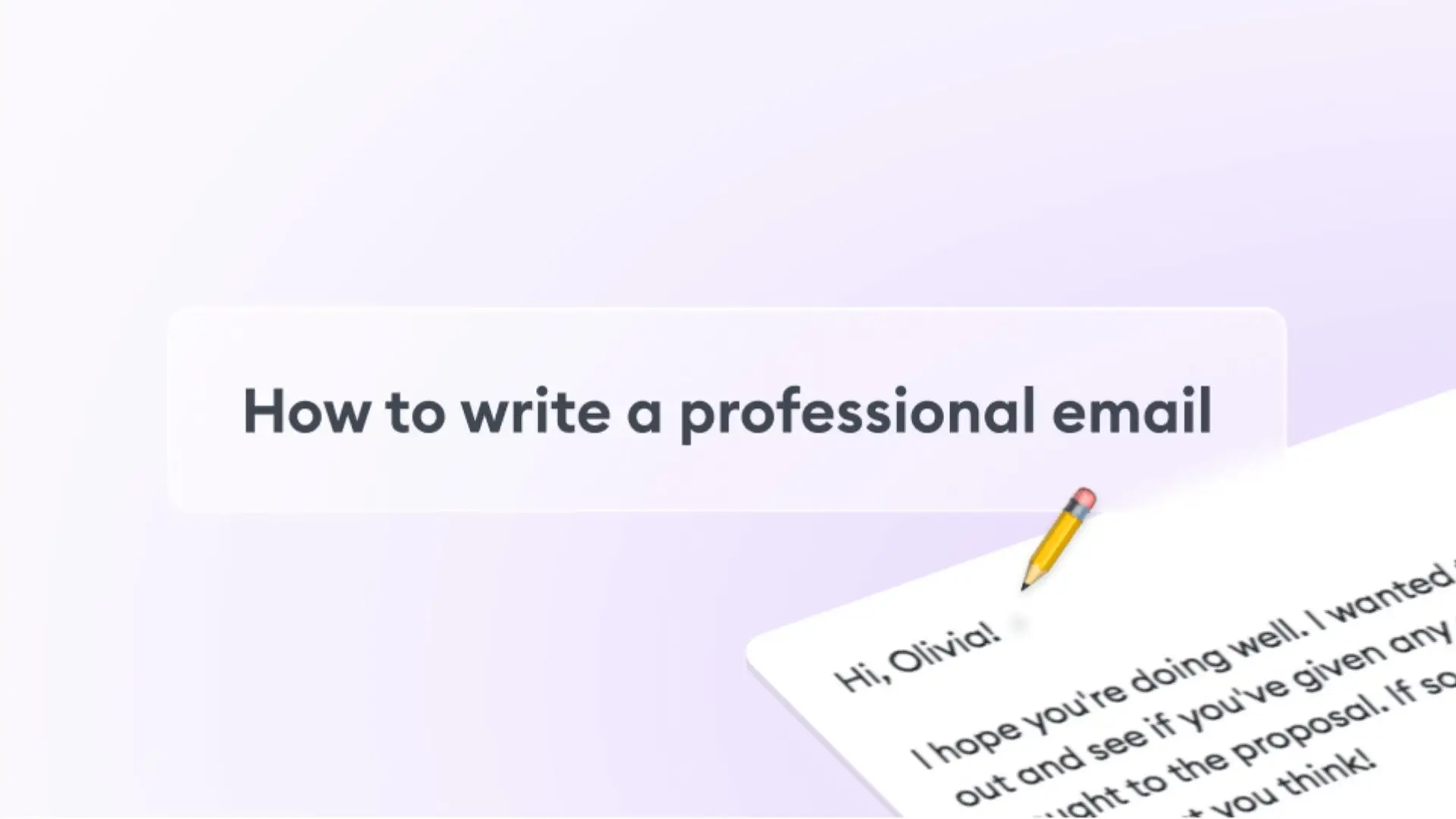How to Write a Professional Email: A Complete Guide
Writing a professional email is an essential skill for anyone in the business world or academic settings. Whether you are communicating with a colleague, a client, or a professor, a well-crafted email helps you convey your message clearly and professionally. In this guide, we will explore how to write a professional email, offer examples, and provide answers to frequently asked questions.
What is a Professional Email?
A professional email is a form of communication used in business or academic environments. This type of email should have a clear and actionable message. It is often used for tasks like scheduling meetings, asking questions, or following up on previous communications.
In essence, professional emails are crucial for effective communication with coworkers, managers, clients, and even academic advisors. They help ensure that messages are conveyed efficiently and respectfully.
Key Characteristics of a Professional Email
- A Professional Tone: Maintain a respectful and courteous tone throughout your email.
- Appropriate Greeting: Use a suitable salutation like “Dear” or “Hi,” followed by the recipient’s name.
- Clear Subject Line: Make sure the subject line clearly reflects the content of your email.
- Concise Message: Keep your message brief and to the point while covering all necessary information.
- Appropriate Closing: Include a call to action or a summary of what you expect next.
- Sign-Off: Use a professional sign-off like “Best regards” or “Sincerely” followed by your name and contact details.
8 Tips for Writing a Professional Email
- Include the Topic in the Subject Line
The subject line is the first thing your recipient sees. Make it clear and relevant. For instance, use a subject line like “Request for Meeting on Project Status” rather than something vague. - Address the Recipient Properly
Start with “Dear” followed by the recipient’s first or last name with an honorific if needed. For example, “Dear Dr. Smith” or “Hi John.” Use “Hello” or “Hi” for people you know well. - Keep It Focused
Stick to one main topic per email. Whether you are asking a question, making a request, or providing information, ensure your email stays on topic and is easy to understand. - Include Your Signature
After the main content of your email, add a professional signature. This should include your name, title, contact information, and any other relevant details. For example:javaCopy codeBest regards, Jane Doe Marketing Manager XYZ Company (123) 456-7890 jane.doe@xyzcompany.com - Proofread
Always review your email before sending it. Check for spelling, grammar, and punctuation errors. Mistakes can undermine your professionalism. - Avoid a Casual Tone
Keep your language formal and avoid using emojis, slang, or overly casual expressions. Stick to professional language and avoid cliché phrases. - Watch Your Words
Remember that emails can be forwarded or shared. Be mindful of what you write, as it may become a permanent record of your communication. - Make Your Directions Clear
Provide clear instructions and include any necessary links or attachments. Ensure the recipient knows exactly what action to take next.
Examples of Professional Emails
Example 1: Declining an Application
Subject: Thank You for Your Interest in Our Summer Graduate Program
Dear Vanessa,
Thank you very much for your inquiry. At this time, we are not accepting new applications for our summer graduate program.
We wish you the best of luck with your future endeavors!
Best regards,
Simone Blakely, PhD
Humanities, Department Chair
Example 2: Requesting Action
Subject: Please Close Your Window Before You Leave
Hi Maha,
As per my last email, please refrain from leaving the window open after leaving your desk at the end of each day. Last night, we came in to find water in your cubicle.
Thank you,
Alexei
Example 3: Scheduling a Call
Subject: Do You Have Time for a Call This Week?
Dear Mr. Albanese,
I recently saw your post on LinkedIn about looking to connect with wholesale snack vendors in your area. I own and operate AcmeCo Snacks, a subscription-based wholesale snack supplier. I would love to have twenty minutes of your time to discuss what I carry and pricing options. Are you free for a quick call later this week?
Please let me know if you’d like me to share my summer catalog. We’ve got some great new products coming in, and I’d love to walk you through our packages.
I’m free Wednesday, Thursday, and Friday from 12–5 p.m. EST. Please let me know a few time slots that work best for you.
I’m looking forward to chatting more!
Best,
Miriam Schneider
Owner and CEO, AcmeCo Snacks
FAQs About Professional Emails
Q1: What is a professional email?
A professional email is a message sent in a business or academic context that communicates a clear, actionable message. It follows specific formatting and tone guidelines to ensure clarity and respect.
Q2: When should I write a professional email?
You should write a professional email whenever you are communicating in a business or academic setting, including with colleagues, clients, professors, and during job applications.
Q3: What are the important elements of a professional email?
Important elements include a clear subject line, appropriate greeting, concise body content, a closing with a call to action, and a professional sign-off with your signature.
Q4: How do I start a professional email?
Start with a suitable greeting such as “Dear [Name]” or “Hi [Name],” followed by the main content of your message. Make sure to address the recipient respectfully and clearly state the purpose of your email.
Q5: How do I create a professional email ID?
To create a professional email ID, use your name or a combination of your name and your organization’s name. For example, “vikashgoyal@company.com” or “vikashgoyal@university.edu.” Ensure that it is simple and clearly identifies you.
By following these guidelines, you can ensure your professional emails are effective and well-received. Mastering the art of email communication will enhance your professionalism and improve your interactions in the business and academic worlds.
For more information visit: topindiatips.com
